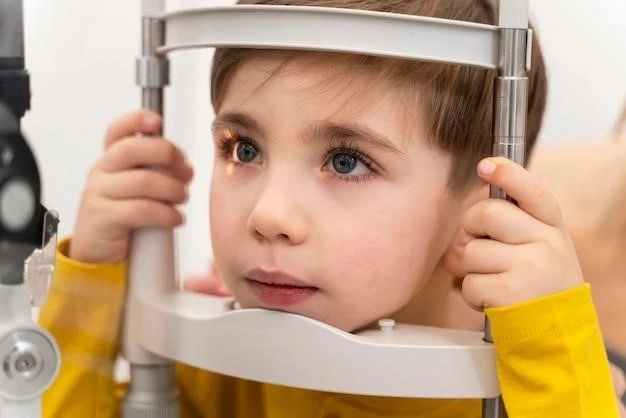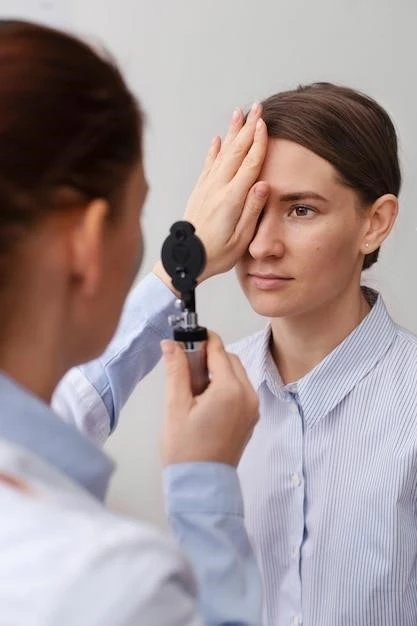Disease — Iris Dysplasia Hypertelorism Deafness
When facing a condition involving iris dysplasia, hypertelorism, and deafness, understanding the intricacies of the disorder is crucial. Below, we will delve into the symptoms, causes, diagnosis, treatment options, support resources, prognosis, and preventative measures related to this syndrome.
Understanding the Condition

When grappling with the rare genetic syndrome characterized by iris dysplasia, hypertelorism, and deafness, it’s vital to comprehend the complexities of the disorder. Iris dysplasia refers to abnormalities in the iris, the eye’s colored part, which can impact vision. Hypertelorism signifies a widened space between the eyes, leading to facial abnormalities. Deafness or hearing loss can range from mild impairment to complete loss in one or both ears. This condition is typically genetic, often resulting from an inherited mutation. Individuals affected by this syndrome may experience various challenges related to vision, facial structure, and hearing. Understanding the condition’s symptoms, causes, and potential impact on daily life is crucial for effective management and support.
Symptoms and Effects
The syndrome of iris dysplasia, hypertelorism, and deafness manifests in various ways. Symptoms may include abnormal development of the iris, such as a misshapen or discolored iris. Hypertelorism can lead to widely spaced eyes, affecting facial symmetry. Deafness or hearing loss may present as difficulty hearing sounds, speech, or music. Individuals with this syndrome may experience challenges with depth perception, visual acuity, and overall hearing abilities. The effects of this condition can impact daily activities, social interactions, and self-esteem. It’s essential to recognize these symptoms early on to seek appropriate medical evaluation and support for managing the physical, emotional, and social implications of the syndrome.
Causes of the Syndrome
The syndrome encompassing iris dysplasia, hypertelorism, and deafness is primarily rooted in genetic factors. It is often caused by an inherited mutation that affects the development of structures like the iris, facial bones, and inner ear. These genetic abnormalities lead to the dysplastic changes in the iris, the widened space between the eyes, and the varying degrees of hearing impairment. While the exact genetic mutations responsible for this syndrome may vary among individuals, the inheritance pattern typically follows a genetic transmission from parents to offspring. Understanding the genetic basis of this syndrome is paramount in providing comprehensive care and support to individuals affected by these interrelated conditions.
Diagnosis and Testing
Diagnosing the syndrome characterized by iris dysplasia, hypertelorism, and deafness involves a multidisciplinary approach. A thorough clinical evaluation, including detailed eye examinations, facial measurements, and hearing tests, is essential to identify the specific abnormalities associated with this condition. Genetic testing may be recommended to pinpoint the underlying genetic mutations responsible for the syndrome. Imaging studies, such as CT scans or MRI scans, can provide detailed information about the structural anomalies in the eyes, face, and ears; Collaboration between ophthalmologists, geneticists, otolaryngologists, and other specialists is key to formulating an accurate diagnosis and developing an individualized treatment plan. Early and precise diagnosis is crucial in managing the symptoms and providing appropriate support to enhance the overall quality of life for individuals affected by this complex genetic syndrome.
Treatment Options
Management of the syndrome involving iris dysplasia, hypertelorism, and deafness requires a comprehensive approach to address the diverse range of symptoms. Treatment options may include corrective surgery to enhance the appearance of the eyes and face, improve vision, or address hearing loss through hearing aids or cochlear implants. Vision therapy or specialized educational programs can help individuals optimize their visual capabilities. Hearing rehabilitation programs and communication strategies can support those experiencing deafness or hearing impairment. Genetic counseling plays a crucial role in providing information about the genetic basis of the syndrome, family planning options, and potential recurrence risks. Collaborating with a team of medical professionals, including ophthalmologists, plastic surgeons, audiologists, and genetic counselors, can help tailor a personalized treatment plan that addresses the individual needs of each patient.
Support and Resources
Living with a complex genetic syndrome like iris dysplasia, hypertelorism, and deafness can present various challenges that require ongoing support and resources. Seeking out support groups, online communities, and advocacy organizations dedicated to rare genetic disorders can provide valuable emotional support and shared experiences. Educational resources on vision therapy, hearing rehabilitation, and genetic counseling can empower individuals and their families to better understand and manage the syndrome; Accessing specialized healthcare providers who have expertise in treating the specific manifestations of this syndrome can ensure comprehensive care. Additionally, staying informed about the latest research advancements and participating in clinical trials may offer new treatment options and therapies. Building a strong support network and utilizing available resources can significantly impact the well-being and quality of life for individuals affected by this rare genetic condition.
Prognosis and Long-Term Outlook
The prognosis for individuals with the syndrome encompassing iris dysplasia, hypertelorism, and deafness can vary depending on the severity of the symptoms and the individual’s response to treatment. Early diagnosis and comprehensive management can significantly improve outcomes and quality of life. While the combination of visual, facial, and auditory abnormalities presents unique challenges, advancements in medical and surgical interventions offer hope for enhanced functionality and aesthetic improvement. Regular follow-up with healthcare providers, including ophthalmologists, otolaryngologists, and genetic specialists, is essential in monitoring the progression of the syndrome and adjusting treatment strategies as needed. With access to appropriate care, support, and resources, individuals affected by this rare genetic condition can lead fulfilling lives and navigate the complexities of the syndrome with resilience and optimism.
Preventative Measures and Future Research
While preventive measures specific to the syndrome of iris dysplasia, hypertelorism, and deafness are limited due to its genetic nature, genetic counseling can help individuals understand the risk of passing the condition to future generations. Family planning considerations and early genetic testing may aid in informed decision-making regarding reproduction. Ongoing research into the underlying genetic mechanisms of this syndrome is crucial for developing targeted therapies and interventions that may improve outcomes and quality of life for affected individuals. Participation in research studies and clinical trials can contribute to the advancement of treatment options and potentially uncover novel approaches to managing this complex genetic condition. By staying informed about the latest research developments and actively engaging in discussions with healthcare providers and researchers, individuals and families can foster hope for progress and potential breakthroughs in the understanding and treatment of this rare genetic syndrome.
